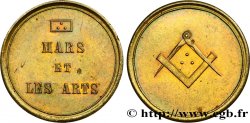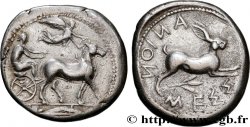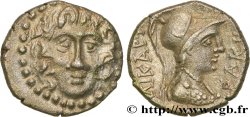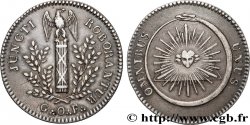Live auction - fjt_1017858 - FRANC-MAÇONNERIE - PARIS GRAND ORIENT DE FRANCE n.d.
Usted debe firmar y ser un comprador aprobado para pujar, Inicia sesión para pujar. Las cuentas están sujetas a la aprobación y el proceso de aprobación se alcanzan dentro de las 48 horas. No espere hasta el día en una venta se cierra el registro.Al hacer una oferta en este artículo usted está firmando un contrato jurídicamente vinculante para comprar este artículo y haga clic en «oferta» constituye una aceptación de los términos de uso de live auctions de cgb.fr.
La subasta debe ser colocado en euros enteros cantidades venta only.The se cerrará en el momento en la descripción del artículo, no se ejecutarán las ofertas recibidas en el sitio después de la hora de cierre. Veces Transmition pueden variar y las ofertas pueden ser rechazadas si espera a los últimos segundos. Para más información envie el FAQ Live auction.
Las ofertas ganadoras estarán sometidas a un 18% IVA incluido por gastos de participación a la venta.
Las ofertas ganadoras estarán sometidas a un 18% IVA incluido por gastos de participación a la venta.
| Valoración : | 300 € |
| Precio : | no oferta |
| Oferta más alta : | no oferta |
| Fecha de fin de la venta : | 24 junio 2025 15:35:43 |
Tipo : GRAND ORIENT DE FRANCE
Fecha: n.d.
Metal: plata
Diámetro: 29 mm
Eje de acuñación: 6 h.
Peso: 8,82 g.
Canto: cannelée
Cuño: sans poinçon
Grado de rareza: R1
Comentarios sobre el estado de conservación:
Patine sombre hétérogène avec des traces d’usure et rayures. Points d’oxydation. Aspect nettoyé
Anverso
Titulatura del anverso: JUNCTI. ROBORANTUR ; À L'EXERGUE : G... O... F....
Descripción del anverso: Faisceau surmonté d'un aigle, cerné de deux palmes.
Traducción del anverso: Notre union fait notre force.
Reverso
Titulatura del reverso: OMNIBUS. UNUS.
Descripción del reverso: Serpent formant un cercle. Au centre, un niveau avec une tête jeune rayonnante.
Traducción del reverso: Le seul de tous.
Comentario
La franc-maçonnerie s’implante en France aux alentours du premier quart du XVIIIe s. sous l’influence d’aristocrates anglais. Initiatique, elle est fondée sur le rite hiramique, du nom d’Hiram de Tyr, personnage biblique, architecte du roi Salomon sur le chantier du Temple et qui a résisté à la torture sans livrer ses secrets. Hiram a aussi donné un point de départ du calendrier maçonnique commençant 4000 ans avant le calendrier chrétien. Les symboles servent de signes de reconnaissance entre les initiés, notamment des outils de constructeur de cathédrales (équerre, compas, niveau, maillet, etc.), des formes (triangle, étoile), des nombres (trois, cinq, sept) et des lettres.
Freemasonry was established in France around the first quarter of the 18th century under the influence of English aristocrats. An initiatory practice, it is based on the Hiramic rite, named after Hiram of Tyre, a biblical figure, architect of King Solomon on the construction site of the Temple, who withstood torture without revealing his secrets. Hiram also provided a starting point for the Masonic calendar, which began 4,000 years before the Christian calendar. Symbols serve as signs of recognition between initiates, including cathedral builder's tools (set square, compass, level, mallet, etc.), shapes (triangle, star), numbers (three, five, seven), and letters.
Freemasonry was established in France around the first quarter of the 18th century under the influence of English aristocrats. An initiatory practice, it is based on the Hiramic rite, named after Hiram of Tyre, a biblical figure, architect of King Solomon on the construction site of the Temple, who withstood torture without revealing his secrets. Hiram also provided a starting point for the Masonic calendar, which began 4,000 years before the Christian calendar. Symbols serve as signs of recognition between initiates, including cathedral builder's tools (set square, compass, level, mallet, etc.), shapes (triangle, star), numbers (three, five, seven), and letters.








 Informar de un error
Informar de un error Imprimir la página
Imprimir la página Comparte mi selección
Comparte mi selección Haz una pregunta
Haz una pregunta Consignar / vender
Consignar / vender
 Descriptivo
Descriptivo















